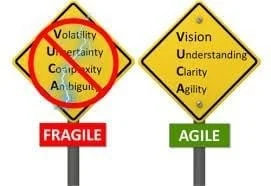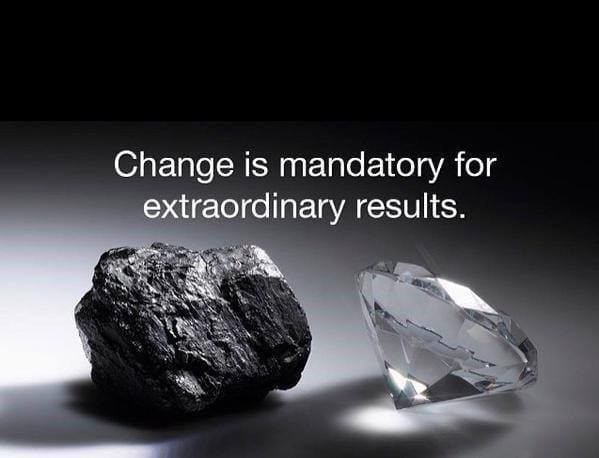
There are weeks that pass by quietly – and then there are weeks like this one.
Global markets tanked. A fresh round of geopolitical uncertainty took center stage. And teams across industries were left with a familiar but uncomfortable question: How do we prepare for a world that won’t sit still?
In our experience at FocusU, one of the themes that has consistently emerged in workshops and leadership sessions is this: the most successful teams are not the ones who avoid change – but the ones who are ready for it.
Whether it was during COVID, a surprise market downturn, or a sudden internal reorg, we’ve noticed that the teams who thrived weren’t necessarily the best-resourced. They were the best-prepared. And that’s a result of mindset, not luck.
Change Is the Only Constant – But That’s a Good Thing
Table of Contents
Change has been part of the human experience forever. But in today’s business landscape, its velocity is something else altogether. From AI breakthroughs to shifting customer behaviors, to entire industries being reshaped in a matter of months – the game is constantly being rewritten.
Let’s take a recent and relatable example: the rise of Generative AI.
Just a year ago, most of us were barely experimenting with AI tools like ChatGPT. Today, it’s reshaping marketing, customer service, training delivery, product development – you name it.
We’ve worked with teams where L&D heads went from skeptical observers to early adopters of AI. Not because someone forced them to, but because they saw the writing on the wall. Those who embraced it – experimented, stumbled, learned – are now better positioned, both professionally and personally.
From VUCA to VUCA Prime

By now, most leaders are familiar with the term VUCA – Volatile, Uncertain, Complex, Ambiguous – used to describe today’s fast-changing world.
But less talked about is its antidote: VUCA Prime, a term coined by Bob Johansen from the Institute for the Future:
- Volatility → Vision
- Uncertainty → Understanding
- Complexity → Clarity
- Ambiguity → Agility
In our leadership interventions, we’ve seen how powerful this reframing can be. When a team anchors itself in shared vision, cultivates real understanding, seeks clarity, and builds agility – change goes from feeling like chaos to becoming a catalyst.
Real Teams. Real Change. Real Growth.
Here’s the thing: most leaders know that change is coming. The challenge is not the knowledge, it’s the readiness.
We recently worked with a senior leadership team from the FMCG sector, navigating a business model pivot. Rather than shielding their teams from the disruption, they made a bold choice: they brought everyone into the room.
What followed were conversations around what change really means, how uncertainty can be an invitation to grow, and how everyone – from mid-level managers to CXOs – needed to step into new roles. The team emerged from that retreat not just aligned, but excited.
As one leader put it:
“Change always felt like something we had to manage. But now it feels like something we get to lead.”
Why Most Teams Struggle With Change
Let’s be honest – the word change rarely excites people. It often brings resistance, fear, or burnout. In our sessions with teams, we’ve – some common roadblocks:
- Change is seen as loss – of control, comfort, or competence
- Managers feel ill-equipped to support their teams through transitions
- Conversations stay stuck in “what’s changing” vs. “what’s possible”
The good news? These are learnable skills.
When we help teams reframe change as a stretch rather than a threat, when we build psychological safety into transitions, and when we invest in helping people feel seen and supported — magic happens.
Leadership in the Age of Disruption
The role of a leader today isn’t to have all the answers. It’s to build cultures where teams feel ready to face the questions.
In our leadership development programs, we often explore three pillars of leading through change:
- Sensemaking: Can you simplify the chaos and help your team see a clear path?
- Storytelling: Can you frame the change in a way that inspires action, not apathy?
- Support: Are you checking in on people — not just for performance, but for morale?
As one manager reflected in a session:
“When I stopped pretending I had it all together, my team actually became stronger.”
Related Reading: Struggling to Keep Up with Workplace Change? Agile Learning Can Help
The Opportunity of Change
What if we stopped seeing change as a disruption and started seeing it as an invitation?
An invitation to:
- Reimagine how we work
- Rediscover our strengths
- Reignite our sense of purpose
In every wave of change, there is a moment where teams either pull together or fall apart. And in our experience, the ones that grow are the ones that pause, realign, and then move forward – together.
Related Reading: Can A Leopard Change Its Spots?
A Final Word
If there’s one takeaway from all this, it’s this: change is here to stay — but so are you.
And if you’re leading a team, managing an org-wide transition, or simply navigating your own curve – know this: You don’t have to figure it out alone.
We’ve worked with organizations across industries to design change readiness workshops, leadership offsites, and culture-building journeys – all centered around helping people and teams not just cope with change, but thrive in it.
Because change, after all, isn’t the problem.
Being unprepared for it is.
So… how ready are you?










